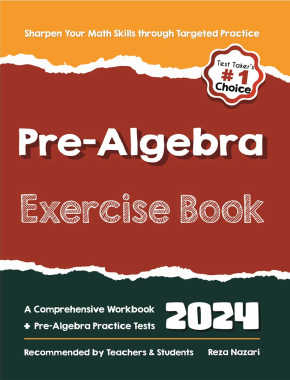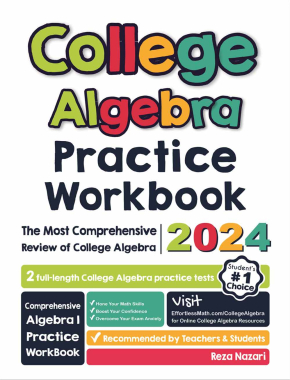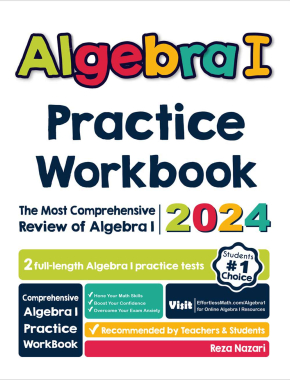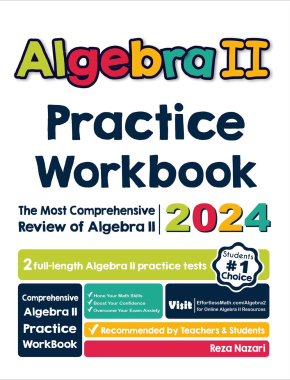How to Factor Numbers? (+FREE Worksheet!)
Factoring, in mathematics, refers to the simplification or reduction of a number, a polynomial, etc., to a result that can not be further reduced or simplified. In this post, you can learn how to factor numbers easily.

“Factors” are the numbers we multiply to get another number. Factoring, in mathematics, refers to the simplification or reduction of a number, a polynomial, etc., to a result that can not be further reduced or simplified. Known as factorization, this method is primarily used in polynomial simplification. In this post learn how to factor numbers easily.
Related Topics
- How to Find the Greatest Common Factor (GCF)
- How to Factor Trinomials
- How to Order Integers and Numbers
- How to Find Least Common Multiple
Step-by-step guide to factoring numbers
- Factoring numbers means breaking the numbers into their prime factors.
- A set of prime numbers is a subset of natural numbers in which each of its members has only two positive divisors, one of which is \(1\) and the other is the number itself.
- First few prime numbers: \(2, 3, 5, 7, 11, 13, 17, 19\)
Some conditions for divisibility of natural numbers by prime numbers
Divisibility by 2: The necessary condition for a number to be divisible by \(2\) is that its unit number is even.
Divisibility by 3: The necessary condition for a number to be divisible by \(3\) is that the sum of the digits of that number is divisible by \(3\).
Divisibility by 5: The condition for a number to be divisible by \(5\) is that its unit digit is zero or \(5\).
Divisibility by 11: A number is divisible by \(11\) if the difference between the sum of even-order digits (units, hundreds, tens of thousands, etc.) and the sum of odd-numbered digits (tens, thousands, hundreds, etc.) is divisible by \(11\).
- To factor a number, start with the smallest prime number which is \(2\). Is the number divisible by \(2\)? If so, divide it by \(2\) and do the same for the result. If not, check the next prime number which is \(3\), and do the same process.
The Absolute Best Books to Ace Pre-Algebra to Algebra II
Factoring Numbers – Example 1:
List all positive factors of \(8\).
Solution:
Write the upside-down division: \(8\) is divisible by \(2\). Then:
| 8 | 2 |
| 4 | 2 |
| 2 | 2 |
| 1 |
The first column shows all the factors of number \(8\).
Then: \(8=2 \ \times \ 2 \ \times \ 2\) or \(8=2^{3}\)
All factors of \(8\) are: \(1, 2, 4, 8\)
Factoring Numbers – Example 2:
List all positive factors of \(24\).
Solution:
Write the upside-down division:
| 24 | 2 |
| 12 | 2 |
| 6 | 2 |
| 3 | 3 |
| 1 |
The second column is the answer.
Then: \(24= 2 \ \times \ 2 \ \times \ 2 \ \times \ 3\)
or \(24=2^{3} \ \times \ 3\)
All factors of \(24\) are: \(1, 2, 3, 4, 6, 8, 12\) and \(24\)
Factoring Numbers – Example 3:
List all positive factors of \(12\).
Solution:
Write the upside-down division:
| 12 | 2 |
| 6 | 2 |
| 3 | 3 |
| 1 |
The second column is the answer.
Then: \(12=2×2×3\)
or \(12=2^2×3\)
All factors of \(12\) are: \(1, 2, 3, 4, 6, 12\)
The Best Book to Help You Ace Pre-Algebra
Factoring Numbers – Example 4:
List all positive factors of \(20\).
Solution:
Write the upside-down division:
| 20 | 2 |
| 10 | 2 |
| 5 | 5 |
| 1 |
The second column is the answer.
Then: \(20=2×2×5\) or \(20=2^2×5\)
All factors of \(20\) are: \(1, 2, 4, 5, 10\) and \(20\)
Exercises for Factoring Numbers
List all positive factors of each number.
- \(\color{blue}{68}\)
- \(\color{blue}{56}\)
- \(\color{blue}{24}\)
- \(\color{blue}{40}\)
- \(\color{blue}{86}\)
- \(\color{blue}{78}\)
Download Factoring Numbers Worksheet

- \(\color{blue}{1, 2, 4, 17, 34, 68}\)
- \(\color{blue}{1, 2, 4, 7, 8, 14, 28, 56}\)
- \(\color{blue}{1, 2, 3, 4, 6, 8, 12, 24}\)
- \(\color{blue}{1, 2, 4, 5, 8, 10, 20, 40}\)
- \(\color{blue}{ 1, 2, 43, 86 }\)
- \(\color{blue}{ 1, 2, 3, 6, 13, 26, 39, 78 }\)
The Greatest Books for Students to Ace the Algebra
Related to This Article
More math articles
- How to Prepare for the PERT Math Test?
- The Ultimate MTEL Mathematics (Elementary) (68) Course (+FREE Worksheets & Tests)
- 8th Grade OAA Math Worksheets: FREE & Printable
- FREE 8th Grade Common Core Math Practice Test
- How to Solve Radical Equations? (+FREE Worksheet!)
- The Quotient Rule: Not Just Dividing Derivatives But Simple Enough
- The Ultimate 7th Grade OST Math Course (+FREE Worksheets)
- How to Find Discontinuities of Rational Functions?
- Mastering the Basics: The Significance of “Algebra I for Beginners” in Your Back-to-School List
- What Skills Do I Need for the ALEKS Math Test?















What people say about "How to Factor Numbers? (+FREE Worksheet!) - Effortless Math: We Help Students Learn to LOVE Mathematics"?
No one replied yet.